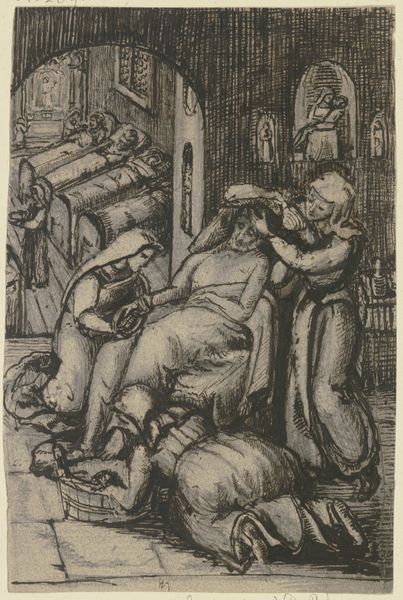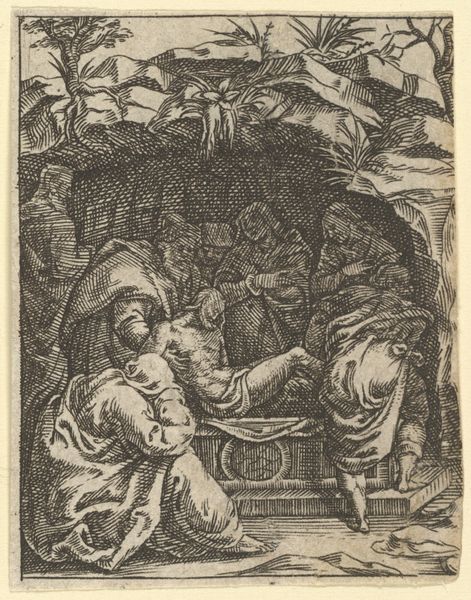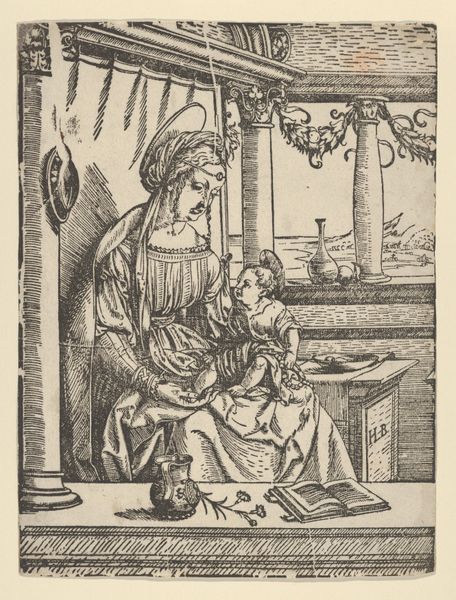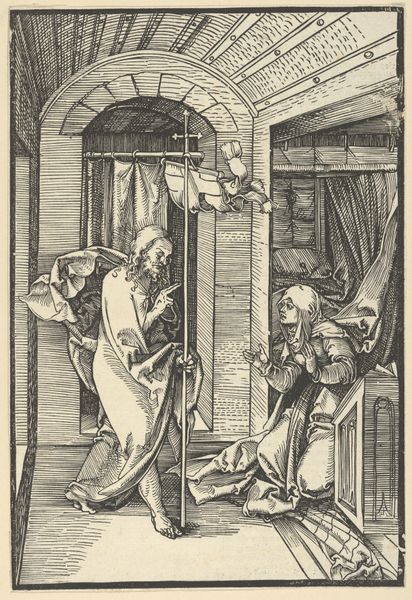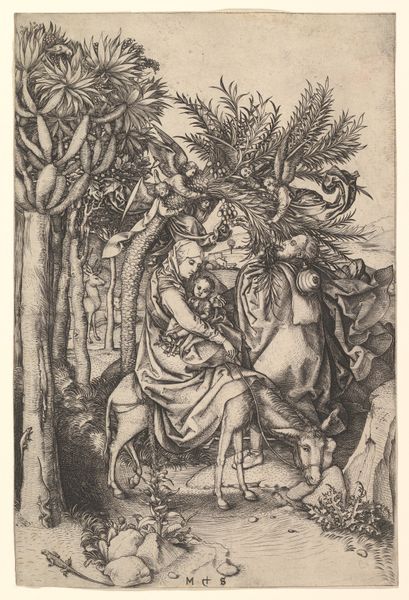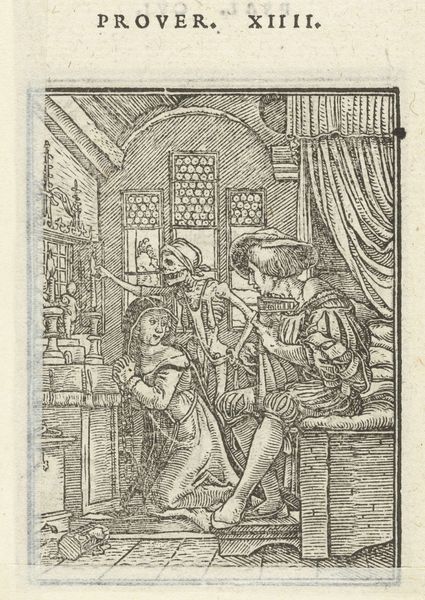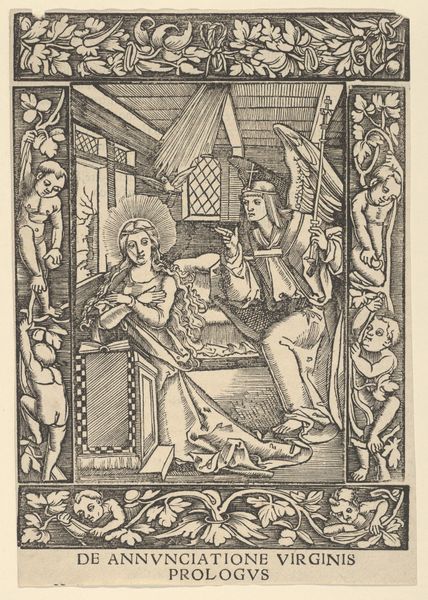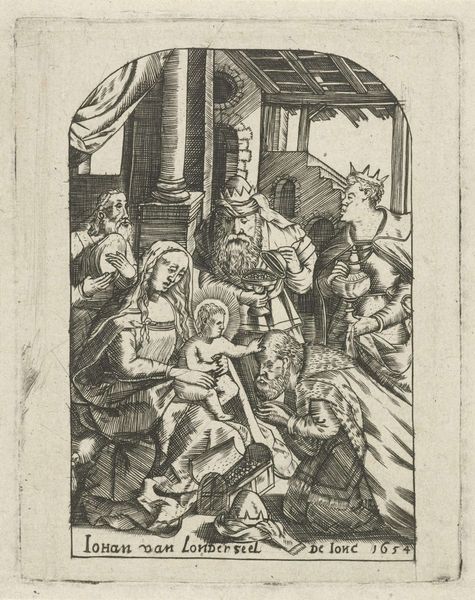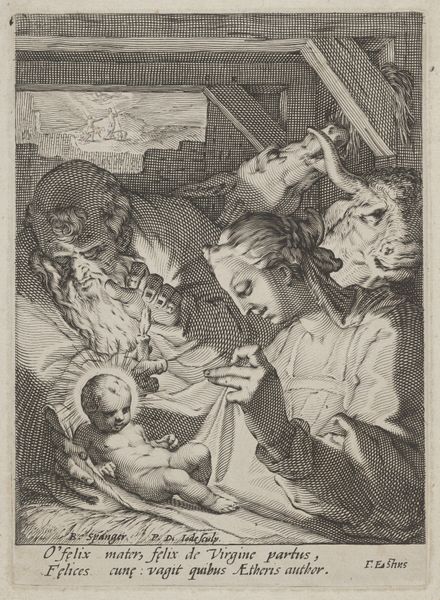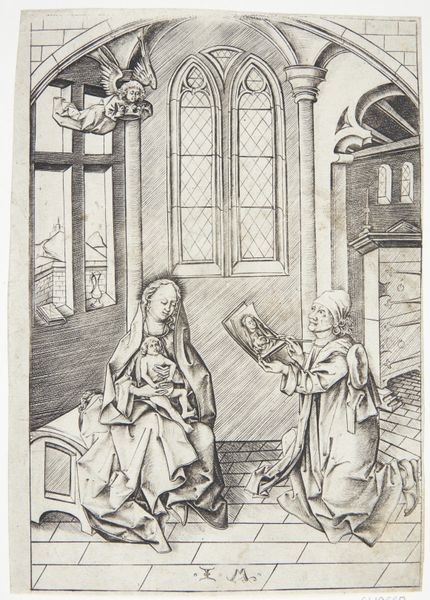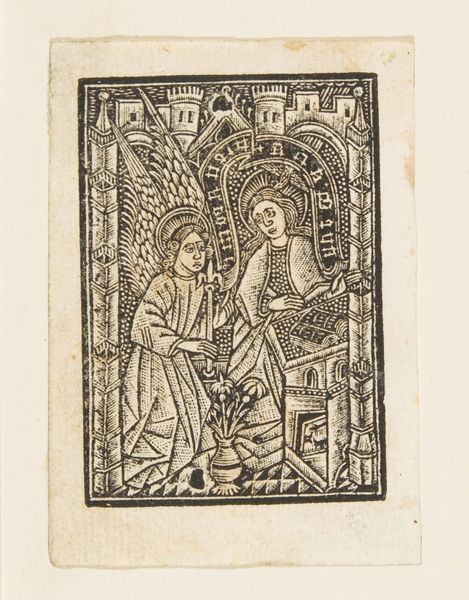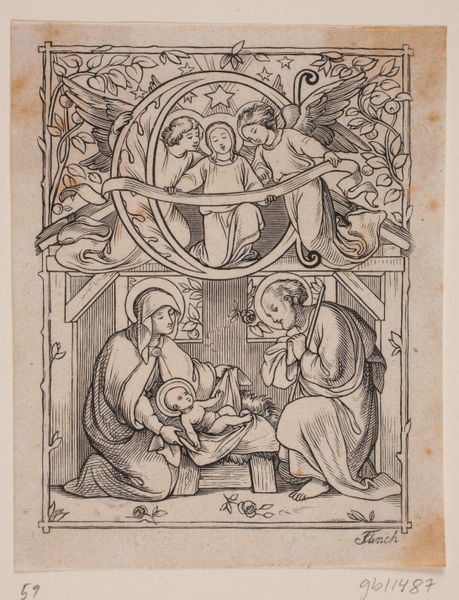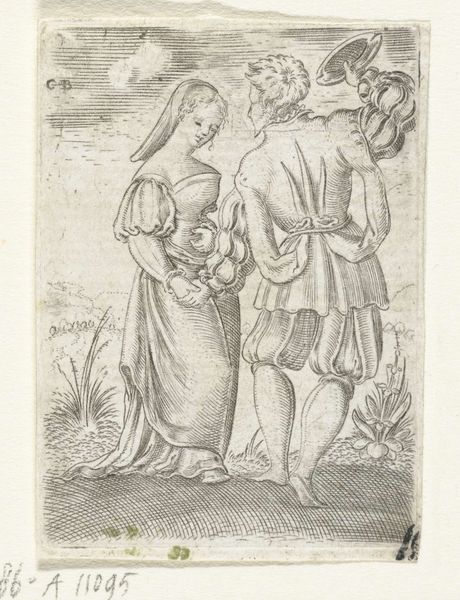
drawing, ink, engraving
#
portrait
#
drawing
#
byzantine-art
#
pen drawing
#
figuration
#
ink
#
history-painting
#
italian-renaissance
#
engraving
#
virgin-mary
#
miniature
Dimensions: height 71 mm, width 43 mm, width 35 mm
Copyright: Rijks Museum: Open Domain
Editor: So this engraving from the Rijksmuseum, “Maria met kind en Heilige Anna,” by Monogrammist AC, dates back to sometime between 1520 and 1562. It's a pen drawing using ink and at first glance it appears very domestic, but also incredibly formal. What strikes you about it? Curator: Well, it’s important to consider the public function of religious imagery at this time. How would this image be circulated and viewed? Was it intended for private devotion, or public display, or perhaps both? The small size of this piece, and that it is an engraving suggests that it was meant to be reproduced, distributed, and held. How might this have affected the spread of specific ideologies regarding motherhood or lineage? Editor: That makes sense. The fact that it’s an engraving suggests accessibility and wider dissemination of its themes. I hadn't considered that. Curator: Exactly. And what do you notice about the way Anna and Mary are presented? Do you see any evidence of artistic license being taken with the rendering of this story? How does this relate to traditional depictions, or perhaps challenge them? Editor: I see your point. They aren’t particularly expressive; their faces seem more like symbols. Is that typical of the way this story was usually presented at the time? Curator: In some ways, yes, especially considering the miniature style. But also remember that by this period artists like Leonardo were injecting much more emotional realism into religious scenes. So what could this mean for the social and religious intentions behind *this* image? Was it aimed at a different, perhaps more traditional, audience? Editor: It seems this artist was consciously situating their work within existing frameworks, possibly directing its message toward those who felt aligned with familiar conventions of religious expression. This piece might say a lot about social expectations around images and faith during the Renaissance. Curator: Precisely. And by extension, the museum that chose to exhibit it now. It shows us the social life of imagery isn't confined to the historical moment of its creation.
Comments
No comments
Be the first to comment and join the conversation on the ultimate creative platform.
